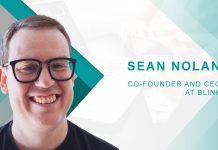1. Could you tell us a bit about yourself and your journey in the HRTech industry?
I started my career in the industry 30 years ago, during the pre-internet days, recruiting for IT in the early 90s, as the dot com boom was happening. I remember using fax machines and desktops and putting an ad in the paper was the primary way to find job applicants. I’ve been involved in or led various efforts to evolve tech stacks for HR/TA for hundreds of companies and various market conditions.
In 2007, when we expanded our business into the Enterprise RPO space, it became apparent that our focus on technology enablement was critical to our company’s growth and recruiting talent retention. We went from managing a few jobs with thousands of clients in our traditional staffing model to managing thousands of jobs for a few clients as we launched the Sevenstep RPO. This really changed everything. We realized we had the talent to do the work, but to compete in the RPO world, we needed better tools to guarantee that our clients received the best analytics and insights into the entire workflow. With those insights, they could evaluate the cost savings and quality improvements of talent that met their goals.
Today we work with organizations in multiple industries in multiple countries that deploy many different tools. So, we built a solution we now call Sevayo Insights that integrates what they need to keep so we can optimize their tools with ours. Or it can allow us to completely take over the tech stack supporting the acquisition and retention of talent and, more importantly, the data and actionable insights needed to run a world-class TA/HR function.
2. What’s your favorite part about working in this industry?
It’s never boring, as no two problems are ever the same, and the industry constantly evolves. While we help our clients face similar challenges, none are ever exactly the same. My work involves helping our delivery teams succeed and ensuring job satisfaction and retention. This is in concert with the needs of our clients, and the demand for the most modern approaches to attracting, engaging and capturing talent. So much has changed since the pandemic. Employees have never been more empowered to change jobs due to so many new factors in how or where people want to work.
My job is to make sure our people feel empowered by staying at our company and working with our clients. We have had one of the highest retention rates in the industry over the past several years. I think part of that success stems from the sense of ownership and opportunity we foster in every one of our employees. And that passes right along to the work they do with clients. People like to be problem solvers, and that’s a mindset we welcome.
3. How would you describe the evolution of the HRTech industry in terms of shifting from manual to machine-driven processes?
It’s all upside opportunity, and we are still at various stages of adoption. Some companies have deep pockets and invest heavily in automation to retain talent, while others have the will to adopt automation but not the means. A big part of this adoption is about the candidates. How do they want to be found or approached? Is using a bot attractive in all cases? I don’t believe it is. The philosophy we adopted is to use machines to enable our staff to focus on high-value areas of the recruiting process. We constantly evaluate and test these tools to determine what works best for candidates, recruiters, hiring managers, and senior TA/HR leaders, mapped against their specific needs. That’s a lot of stakeholders to solve for!
Recruiting is a people and relationship-based business, so be smart about how you test automation and consider its downstream impact, as it won’t work in every situation.
4. What are your perceptions about the evolving HRtech domain and do you think there is more to come?
I think there is so much more to come. Today everyone can be ‘found’. So securing great talent is not really a search issue. I see an exciting future for advancing HR/TA technologies to provide actionable data that is meaningful to senior leaders. It’s also important to use the data and technologies to support better hiring manager behaviors, selections and employee training. Sometimes this leads to an AI discussion, and the question arises, “Will AI replace recruiters?” In some cases, the answer is yes, but at some point, the employee has to start work and feel included.
Today some employees are seeing their work environment or meeting their boss on their first day on the job, and sometimes they are doing this virtually. We need to provide the support necessary for managers to interact with, develop, and retain these employees who are so hard to capture. Virtual reality might play a role in training, as some medical programs already use it for students. So, it’s not out of the question that virtual reality could be used for client service training and sales, for example.
5. Do employee performance metrics play a major role in planning succession and career progression paths?
Yes, without question, but the trick is knowing what to measure and why. How do you measure engagement or identify an employee who is a high performer or one that needs help? The focus has to be on improving the employee and manager relationship. If you are measuring productivity, are you doing this to weed people out, or are you setting an atmosphere of learning and development? You need to establish a baseline that empowers employees to want to learn and motivates them to take the extra step.
6. Have technological advancements changed the way of talent acquisition?
Yes, of course. As I mentioned, today, everyone can be found. We have experienced a new communication dynamic. It has gone from calls to emails to texts. We know tech must improve, but with talent acquisition, you must eliminate the risk of missing good talent. You can’t weed out talent effectively with an algorithm exclusively. Tech advancement is great but how you take samples and slowly engineer a process that identifies good talent without risking missing good talent is critical. Enabling recruiters and training managers to interview correctly and apply the human touch won’t go away, and it shouldn’t go away.
7. Can mounds of data affect decision-making in the hiring process?
Mounds of anything can create a big mess. I don’t think in terms of ‘more’. I think in terms of applicable and actionable. For example, a code test is a good way to measure someone’s programming skill, but typically the best candidates don’t want to take them. If these skills are required to make a hiring decision, is it a knockout or a reference point if they do poorly or don’t take this test? We’ve learned that previous performance in one job does not relate to the outcome of performance in a new job. This makes sense, as the new job can be set up differently. For instance, it could be a step up in responsibility, or the management team could be less effective. So many factors go into hiring decisions, so your organization better be clear about what kind of people you want to employ and formulate how you want to access that talent and measure quality over time.
8. Are there any core areas such as designing software that HR leaders need to pay attention to in the talent acquisition process?
Our business’s primary stakeholders are senior HR leaders, CHROs, and senior talent acquisition leaders. Many of them say they have all the data they need, but it’s all in various places. What Sevenstep has built over the last few years is a data aggregator, Sevayo Insights, that can pull in data from anywhere. That is a great innovation, but it still isn’t the complete story because once you pull that data together, you need to know what to do with it. How do you take data from disparate channels and formats and then interpret that data to answer specific needs of HR, with context, apples-to-apples comparisons and even provide intuitive intelligence to answer the questions you didn’t even know you had? It’s a tall order, but we have done that. It took us years of specialized, dedicated development to get there. So HR leaders cannot and should not spend their effort trying to replicate this by designing software. HR should leverage the technology that suits their needs through industry sources.
9. Could you give us a sneak peek into the next growth phase of Sevenstep?
We are invested heavily in data analytics that provide insights at various levels of the organization. So think about it as an insight that can solve one small issue today or insights that tackle much more far-reaching company goals like DE&I outcomes or managing succession planning. Our analytics team is growing.
Our technology that supports decisions is now deployed to over 300 users at one of the world’s largest healthcare providers.
They use the system daily at the C-level, the TA/HR leadership level, and the recruiter level. Recently we’ve incorporated our MSP and contractor staffing programs into the technology so that our clients can see snapshots of their entire employee base, contractors or FTEs. They can see all these resources in one place and filterable by departments, going all the way down to hiring managers and recruiters.
We are collecting more feedback from clients on what they want to see and how they want to see it, including the FTE and contractor data in an actionable manner. The future is to look at the talent population as a whole, regardless of how a candidate prefers to be employed, so we can guide clients on how best to make decisions to capture and engage their workforce.
10. Which inspires you to achieve more at work?
It’s about our people. I want to make sure they have the tools and support to do the best job they can. I want to set them up for success so they can set our clients up for success. I also like working with clients committed to improving their workplace for their people.
11. Where do your passions lie? What do you think defines you as a person?
I don’t have a tech background by education. I have it by application. So, while I don’t come from the tech side, I understand how it works. I don’t get excited about the latest new development of any particular tool. My passion is in applying any technology that will improve the lives of our staff, candidates, hiring managers, and senior leaders who are also working to improve their lives, the lives of others and their companies.
I’ve been with Sevenstep for 30 years because our company is supremely focused on providing opportunity for people who want to make our company great. I get up every day to make this a better place for those who work here.
12. What is the most significant piece of advice you would want to give to company leaders?
Senior leaders need to live up to their mission statements and value propositions for their employees. Employees have never been more engaged and motivated to create a better life for themselves and others. They have also never been more outspoken. As a senior leader, if you want to grow your company, you must engage and motivate your employees to drive toward a common goal, whether it be execution or strategic thinking.
Discover the full potential of your Hrtech strategy with our comprehensive Hrtech News and Hrtech Interviews.

Paul Harty Chief Solutions Officer, Sevenstep
Paul is the Chief Solutions Officer for Sevenstep, a global talent solutions company that surpasses siloed RPO and MSP approaches using Sevayo Insights to aggregate data and apply real-time predictive analytics to optimize hiring, enable management, and advance business objectives.













